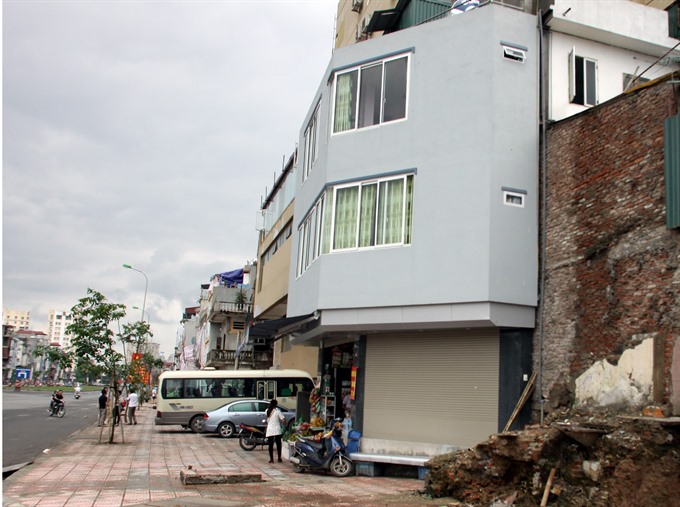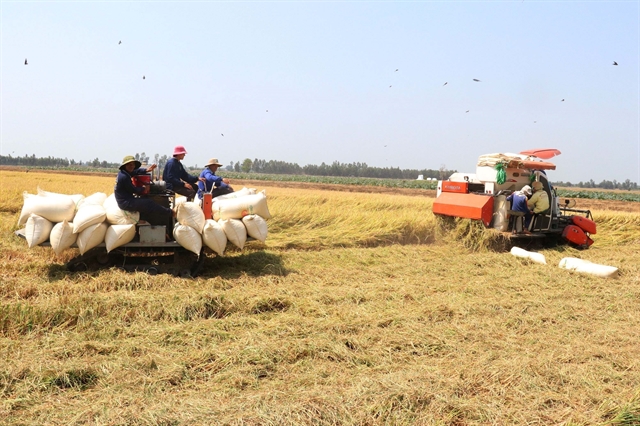 Society
Society

Construction violations have been rampant for years in Hà Nội but lax management and irresolute solutions have left the problem unresolved.
 |
| An “oddly-shaped” house on Ô Chợ Dừa-Hoàng Cầu section, a part of Hà Nội’s Ring Road No1. Under existing regulations, houses cannot be built on a plot smaller than 15 sq.m. — VNA/VNS Photo Tuấn Anh |
HÀ NỘI – Construction violations have been rampant for years in Hà Nội but lax management and irresolute solutions have left the problem unresolved.
According to the city’s Department of Construction, from 2014 to early 2016, over 3,000 construction projects violated regulations. The violations ranged from building without permissions or not complying with permits, to failing to meet the demands of environmental sanitation or labour safety.
Violations not only occur in household construction but also on big-scale commerical projects. In 2015 alone, the city found violations in 18 urban area building projects, of which six did not have building permission.
A recent study by the Department of Urban Areas, under the city’s People’s Council, found the same result.
In the districts of Cầu Giấy, Hoàn Kiếm, Tây Hồ and Hoàng Mai, investors deliberately defied the law or sought ways to rationalize their violations, opting to pay fines and enjoy the huge profit potential of their projects, according to the study.
In Đại Kim Ward, Hoàng Mai District, 37 projects covering 6.5 ha violated building regulations.
In Hoàn Kiếm District, a hotel complex of over 10 floors at 126-128 Hàng Bông Street failed to comply with architectural management regulations of the Old Quarter, which require that buildings facing the street have at most four floors and six at the back. But the demolition of the extra floors remains slow at this and other buildings that have violated building codes.
The study points out that careless management at various authority levels and irresolute handling of violations remain common, allowing them to continue.
Trần Ngọc Hùng, Chairman of the Việt Nam Federation of Civil Engineering, concurred, adding that imposing administrative fines while allowing construction to exist have made it easy for violators.
“As a consequence, the city’s urban planning is spoiled. Other infrastructure, including electricity, water, schools, and roads suffer whereas benefits go to certain groups,” he said.
’Super-skinny houses’
The problem of “super-skinny” and “oddly-shaped” houses also mars the face of the capital city.
Under existing regulations, houses cannot be built on a plot smaller than 15 sq.m. However, the study by the Department of Urban Areas found 75 such houses in Hoàng Mai District, 51 in Thanh Xuân District, a majority along Ring Road 2. In Hai Bà Trưng District, there are 70 land areas which do not meet the requirements for construction.
According to an official of the municipal Department of Architectural Planning, owners of land not meeting construction standards are required to negotiate with adjacent households to merge their lands together for a bigger land area. In case they can not reach consensus, local authorities must seize the land and use it for public services.
Nguyễn Đức Hải, Vice Chairman of Hoàng Mai District’s People’s Committee, said the district already has a plan for using seized or merged lands, but lacks the money for land clearance.
Bùi Xuân Tùng, Deputy Director of the Department of Architectural Planning, attributed the problem to the fact that capital for land-clearance is not allocated in road construction projects. Road planning is out of sync with that of the roadsides, he said. – VNS









